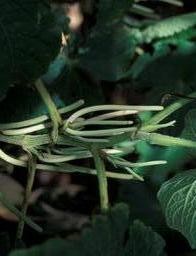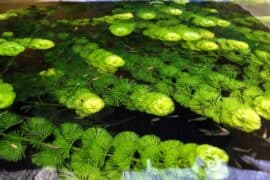Kava
(Macropiper methysticum)

Description
Kava or kava kava (Piper methysticum: Latin 'pepper' and Latinized Greek 'intoxicating') is a crop of the Pacific Islands. The name kava is from Tongan and Marquesan, meaning 'bitter'; other names for kava include ʻawa (Hawaiʻi), ʻava (Samoa), yaqona or yagona (Fiji), sakau (Pohnpei), seka (Kosrae), and malok or malogu (parts of Vanuatu). Kava is consumed for its sedating effects throughout the Pacific Ocean cultures of Polynesia, including Hawaii, Vanuatu, Melanesia, and some parts of Micronesia, such as Pohnpei and Kosrae. The root of the plant is used to produce a drink with sedative, anesthetic, and euphoriant properties. Its active ingredients are called kavalactones. A systematic review done by the British nonprofit Cochrane concluded it was likely to be more effective than placebo at treating short-term anxiety. Moderate consumption of kava in its traditional form, i.e., as a water-based suspension of kava roots, has been deemed to present an "acceptably low level of health risk" by the World Health Organization. However, consumption of kava extracts produced with organic solvents, or excessive amounts of poor-quality kava products, may be linked to an increased risk of adverse health outcomes, including potential liver injury. It was spread by the Austronesian Lapita culture after contact eastward into the rest of Polynesia. It is endemic to Oceania and is not found in other Austronesian groups. Kava reached Hawaii, but it is absent in New Zealand where it cannot grow. Consumption of kava is also believed to be the reason why betel chewing, ubiquitous elsewhere, was lost for Austronesians in Oceania. Kava was historically grown only in the Pacific islands of Hawaii, Federated States of Micronesia, Vanuatu, Fiji, the Samoas and Tonga. An inventory of P. methysticum distribution showed it was cultivated on numerous islands of Micronesia, Melanesia, Polynesia, and Hawaii, whereas specimens of P. wichmannii were all from Papua New Guinea, the Solomon Islands, and Vanuatu. The kava shrub thrives in loose, well-drained soils where plenty of air reaches the roots. It grows naturally where rainfall is plentiful, attaining over 78 inches (2,000 mm) per year. Ideal growing conditions are 70–95 °F (21–35 °C) and 70–100% relative humidity. Too much sunlight is harmful, especially in early growth, because kava is an understory crop.
Taxonomic tree:







